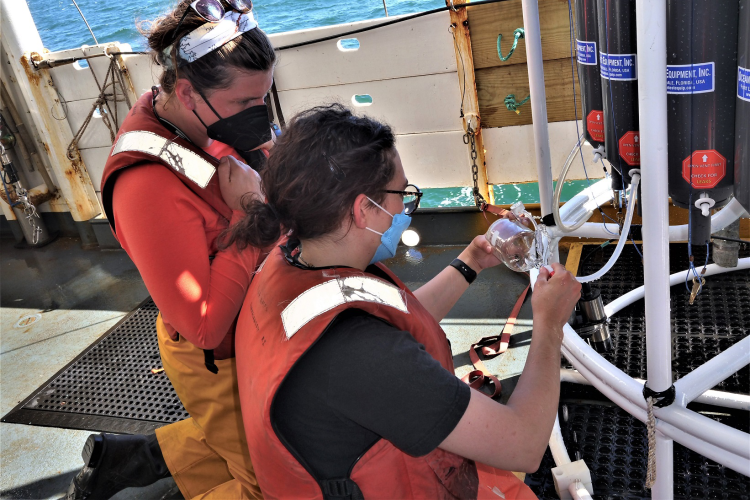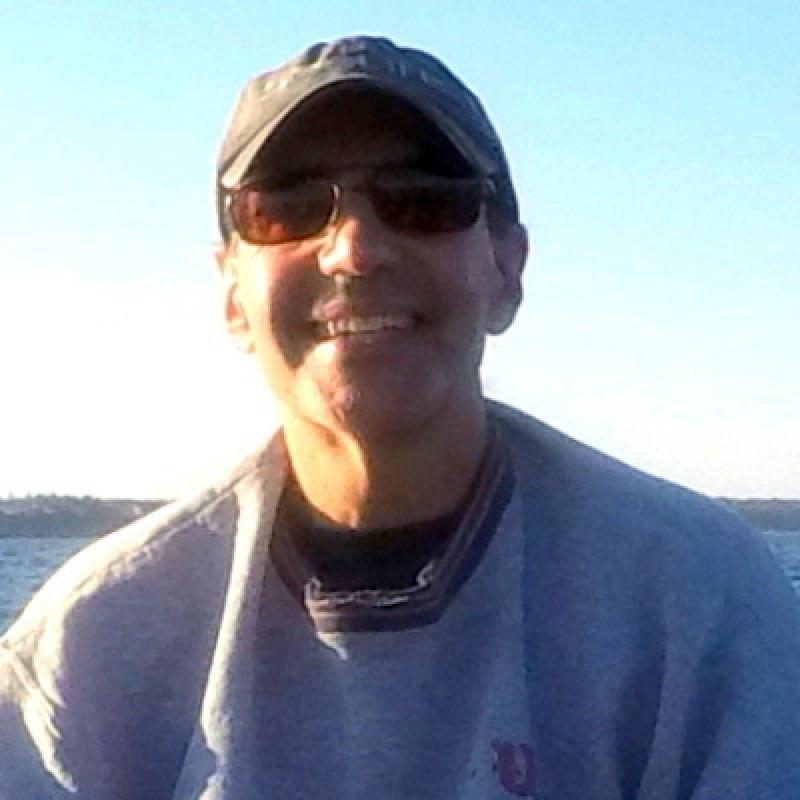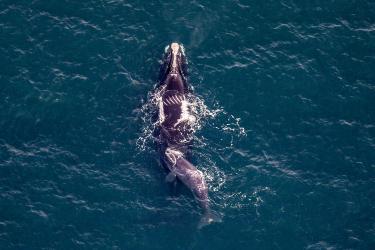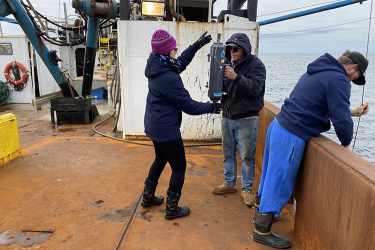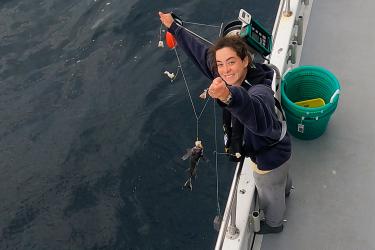I am writing this last update as we are heading to our “Final 4” stations before returning home to Pier 2 at Naval Station Newport.
Sampling Success
Considering our slow start, this has been an unbelievably successful cruise. We dropped the most southerly stations after our first return to port (due to illness), and concentrating on covering the northern part of the survey area. Wee sampled at 150 stations, covering much of the mid-Atlantic Bight and all of Southern New England, Georges Bank, and the Gulf of Maine. Our quest for pteropods, to study the effects of increasing ocean acidity on their shell formation, yielded 48 samples across a wide swath of our survey area. We are also gathering baseline data on upcoming proposed wind energy areas.
I have not talked much about our two seabird observers in previous updates. They worked tirelessly, every day of this trip, to document and photograph seabirds, marine mammals, sea turtles, and even large fish like molas (sunfish) and basking sharks that were spotted along our cruise track. They stood watch from their observation posts on the flying bridge or ship’s bridge.
What Makes a Successful Cruise?
Successful cruises like this are always due to a combination of factors. Weather certainly plays a very large part. The only weather delay we had was for 1 hour, when we held off putting our nets in the water until a thunderstorm passed over a planned station in the Gulf of Maine.
The other factor is keeping our gear and the ship in working order. All worked smoothly on this trip, including our brand-new water sampling device which was on its first cruise.
The third—often overlooked, but perhaps most important—component, is the people involved in the survey. This includes the scientific party, the vessel command and vessel crew. All of these groups worked smoothly together toward our mission of sampling over as wide an area and gathering as many data and samples as possible in the time allotted for this cruise. I’d like to thank my science colleagues for their expertise in working with me (three were on their first cruise).
The vessel command deserves special recognition for dealing with a number of issues on this trip, starting with a response to COVID. They dealt with it quickly and decisively, returning to port and finding a replacement officer in record time. When they were short-handed on deck crew, two NOAA Corps officers pitched in, taking turns to help deploy and retrieve our gear. Their guidance and patience in dealing with me when we needed to insert “opportunistic” water casts and bongo tows in right whale areas is much appreciated!
And there is the crew, who went out of their way to make us all feel safe and comfortable. They always lent a hand to help us do things better, be it bongo tow or water cast, a way to secure plankton nets during wash-downs, or teaching us to make espresso coffee (thanks Chief!).
The NOAA ship Henry B. Bigelow will be docking in Newport at 08:30 a.m. on Friday, June 17. It has been my great privilege and joy to sail with everyone onboard this vessel. Thank you all very much!
Jerry Prezioso Chief scientist - Ecosystem Monitoring Survey HB2204
